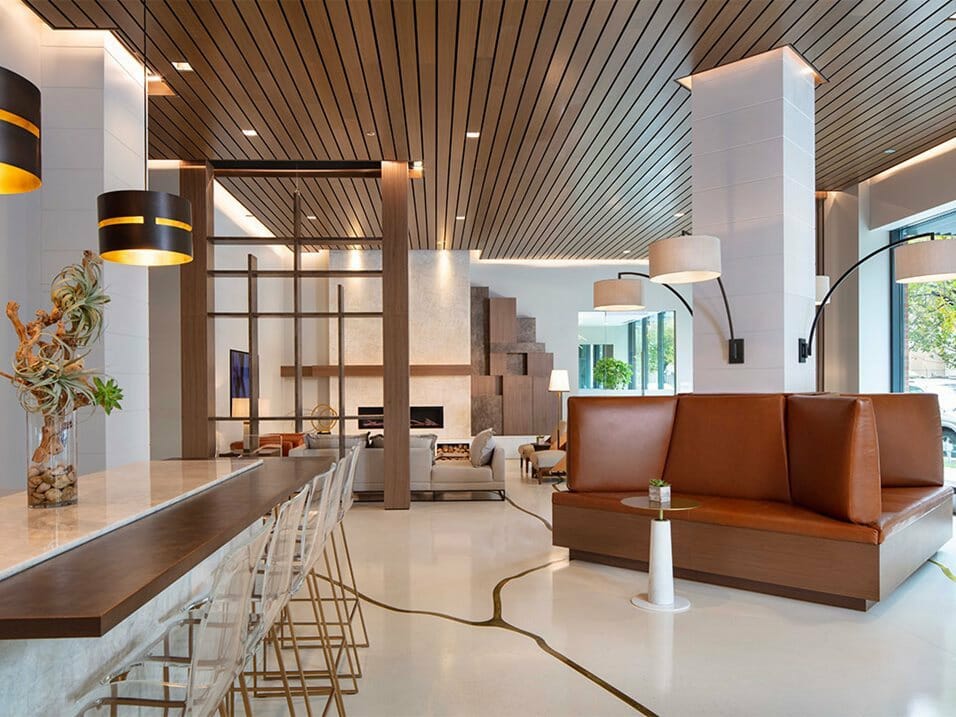Image Source: Google
Commercial interior designers are the creative minds behind the spaces we work, shop, and dine in. Their job is to enhance the function, safety, and aesthetics of interior spaces to create an environment that meets the needs of their clients. Have you ever wondered what goes on behind the scenes in the daily life of a commercial interior designer? Let's take a look at a typical day in the life of these talented professionals. Refer Link: https://partners-in-design.co.uk/interior-designers-dorset/.
Meeting with Clients
Client Consultation
- One of the most crucial parts of a commercial interior designer's day is meeting with clients to discuss their vision for the space.
- During this consultation, the designer will listen to the client's needs, preferences, and expectations for the project.
- It is essential for the designer to understand the client's branding, target audience, and functional requirements to create a design that aligns with their goals.
Site Visits
- After the initial consultation, the designer will typically conduct a site visit to assess the space, take measurements, and identify any structural limitations.
- This visit allows the designer to have a better understanding of the space's potential and challenges, which will inform their design concepts.
- Site visits also provide an opportunity for the designer to collaborate with architects, engineers, and contractors to ensure the design meets building codes and regulations.
Design Development
Conceptualization
- Once the client's needs and site requirements are established, the designer will begin the conceptualization phase of the project.
- During this stage, the designer will create mood boards, sketches, and renderings to present design concepts to the client.
- Designers may use software such as AutoCAD, SketchUp, or Revit to create detailed floor plans, elevations, and 3D models of the space.
Material Selection
- Commercial interior designers work closely with suppliers and manufacturers to select materials, finishes, and furnishings that align with the design concept and budget.
- Designers must consider factors such as durability, sustainability, and aesthetic appeal when choosing materials for commercial spaces.
- They may source furniture, lighting, flooring, and accessories from a wide range of vendors to create a cohesive and functional design.
Project Management
Coordination
- Commercial interior designers act as project managers, overseeing the implementation of the design from concept to completion.
- They work closely with contractors, vendors, and other stakeholders to ensure the project stays on schedule and within budget.
- Designers must effectively communicate with all parties involved, resolving any issues that may arise during the construction phase.
Quality Control
- Quality control is a crucial aspect of project management for commercial interior designers.
- Designers must conduct regular site visits to inspect the quality of workmanship, materials, and installations to ensure that the design is executed according to their specifications.
- They must address any deficiencies promptly and make any necessary adjustments to meet the project's standards.
Final Touches
Installation
- Once construction is completed, the designer will oversee the installation of furniture, fixtures, and accessories to bring the design to life.
- Designers work closely with installers to ensure that every element is placed correctly and the space is executed according to the design plan.
- They pay attention to details such as lighting, accessories, and styling to create a cohesive and inviting environment for the end users.
Client Presentation
- Before the final reveal, the designer will present the completed project to the client for approval.
- During this presentation, the designer will showcase the design concept, materials, and finishes used in the project.
- The client may provide feedback or request modifications, which the designer will address before finalizing the project.
Conclusion
As we have seen, the daily life of a commercial interior designer is a dynamic and multifaceted journey that involves creativity, collaboration, and attention to detail. From meeting with clients to overseeing the final touches of a project, these professionals play a crucial role in shaping the spaces we inhabit. Their ability to blend aesthetics with functionality creates environments that inspire, enhance productivity, and reflect the identity of their clients. The next time you step into a beautifully designed office, retail store, or restaurant, take a moment to appreciate the work that goes on behind the scenes to bring that space to life.

